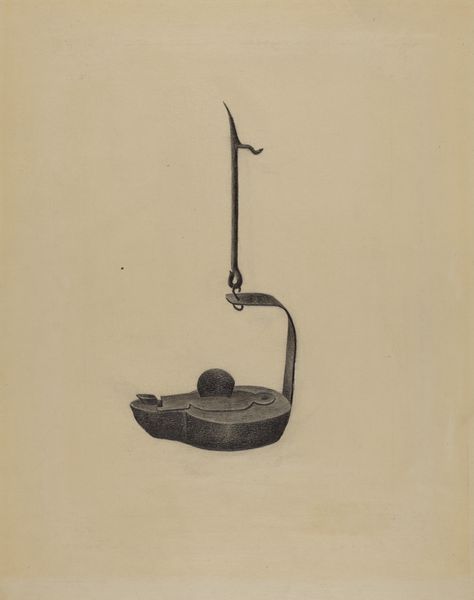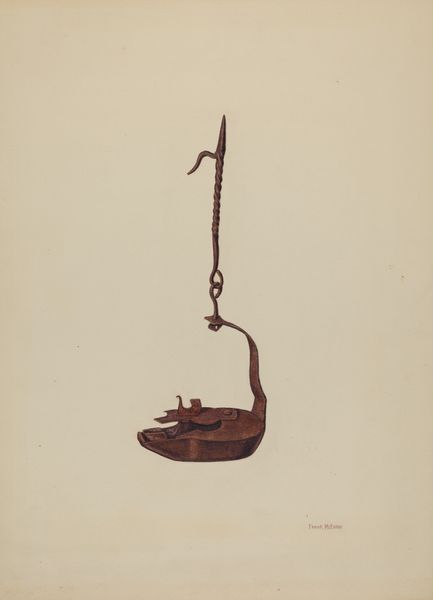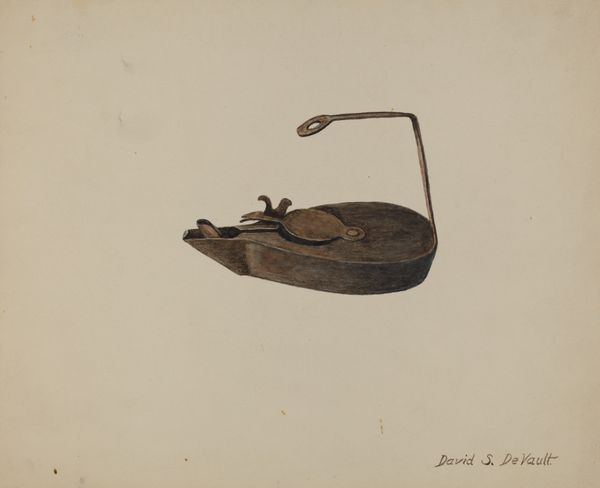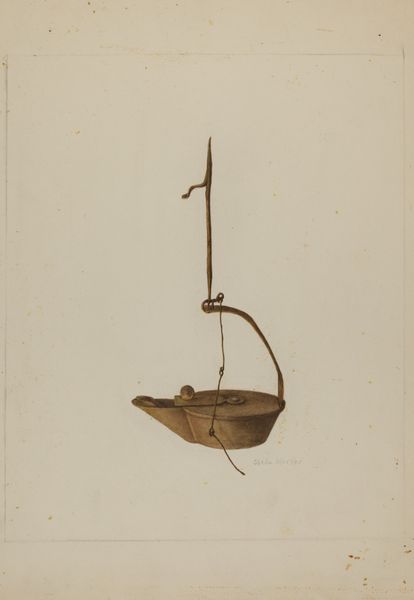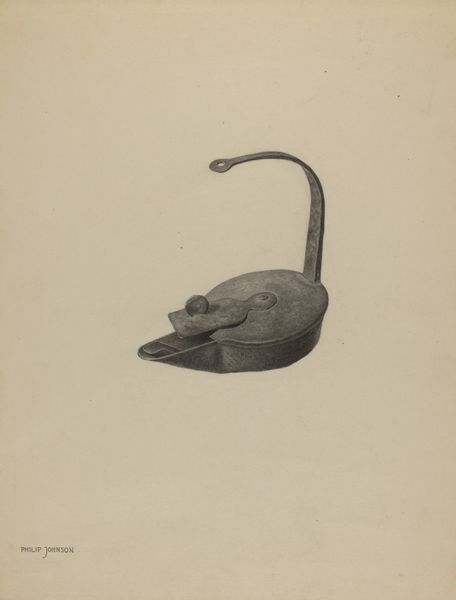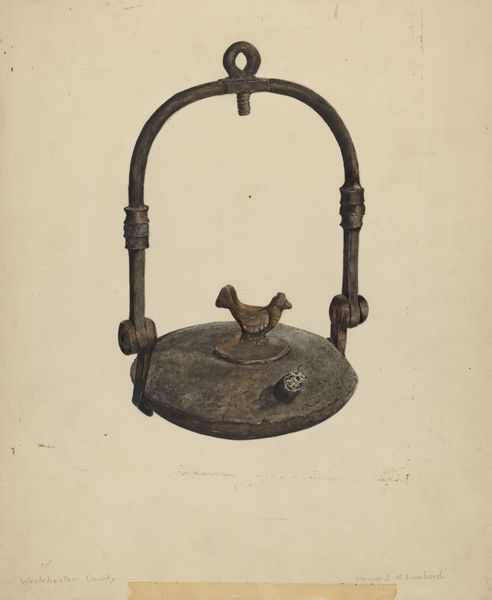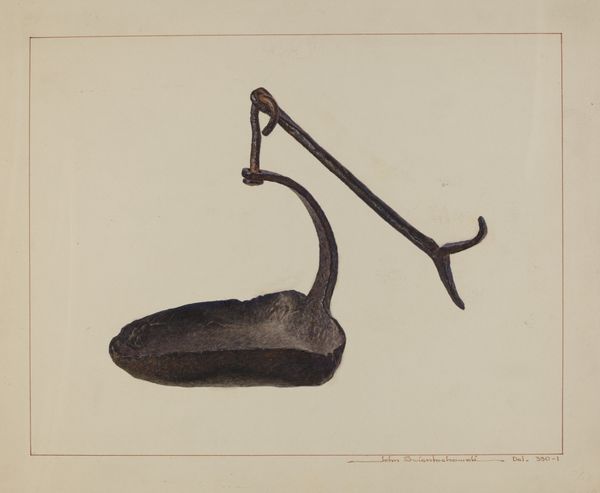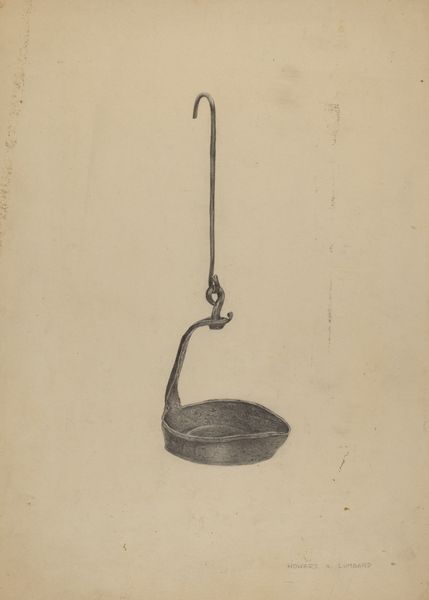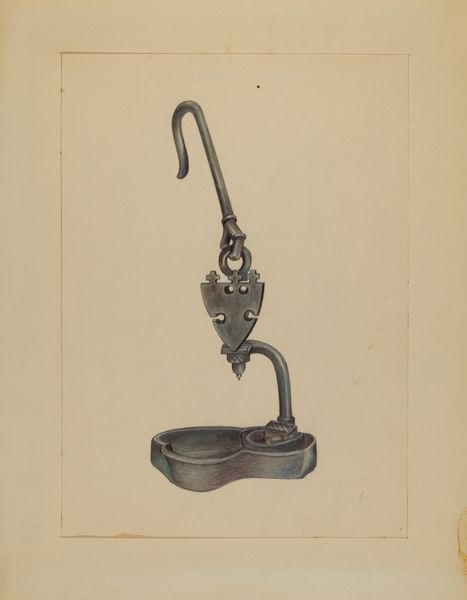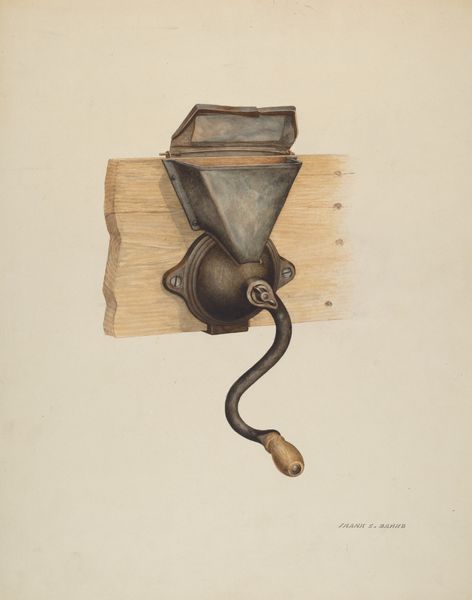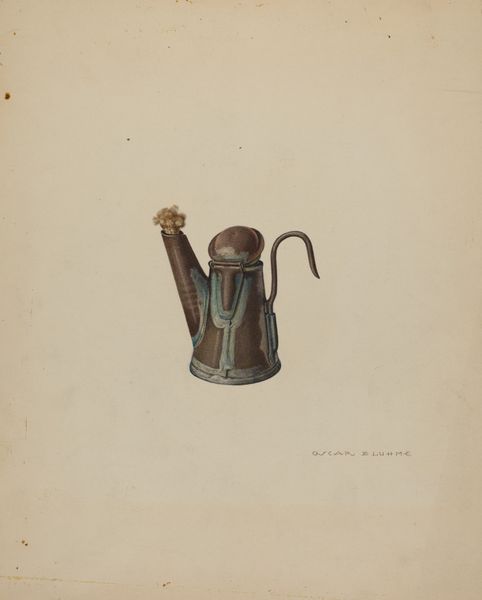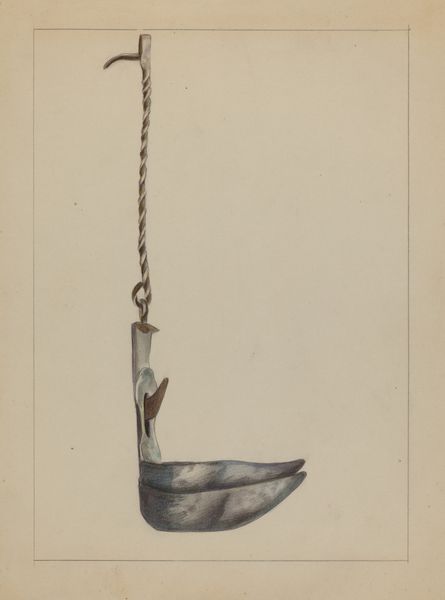
drawing, watercolor
#
drawing
#
watercolor
#
watercolour illustration
#
watercolor
#
realism
Dimensions: overall: 43.4 x 35.6 cm (17 1/16 x 14 in.)
Copyright: National Gallery of Art: CC0 1.0
Curator: Here we have a watercolor and drawing titled "Betty Lamp," created around 1940 by Albert Rudin. Editor: My first impression is how it casts a solitary, contemplative mood. The earthy palette feels reminiscent of simpler times. Curator: Indeed. The Betty Lamp, a precursor to the oil lamp, played a vital role in domestic life, especially in the 18th and 19th centuries, mainly illuminating homes. It represents a time when tasks relied heavily on natural resources and human effort. It symbolizes domestic labor, a space mostly occupied by women. Editor: Light, traditionally a symbol for knowledge, consciousness and sometimes hope— what can you tell me about the lamp's visual symbolism here? The artist focuses less on any grandiosity and more on the functional essence. Curator: Absolutely. The rendering favors function over glamour, speaking volumes about resourcefulness. Moreover, one could argue about class and power structures. Those who could afford to light a fire in the fireplace had the power, and people relied on Betty Lamps when firewood was short or unavailable. The work encapsulates broader questions about gender, work and power during the time. Editor: Its open lid almost seems to invite speculation. Perhaps it signifies unveiling secrets or the illumination of hidden stories? Curator: Precisely. Given its functionality, the lamp likely silently witnessed generations' worth of stories within domestic spaces. We can imagine stories around the fireplace told in the house, gossip or singing, creating a space to discuss issues in their own terms. It reflects shared experiences in an era starkly different from our own. Editor: For me, observing the rendering of light and shadow, the lamp takes on an almost haunting presence. It stirs reflections on the forgotten corners of life, and even feels somewhat metaphorical. Curator: It's a fascinating interplay. Focusing on quotidian artifacts can help reveal sociohistorical issues we usually forget. Art pieces such as Rudin’s "Betty Lamp," open these broader discussions. Editor: Thank you for those perspectives, this journey illuminated deeper narratives for me! Curator: It's been a pleasure to connect through the ages, finding ourselves questioning the narrative embedded within an object such as this humble Betty Lamp.
Comments
No comments
Be the first to comment and join the conversation on the ultimate creative platform.
